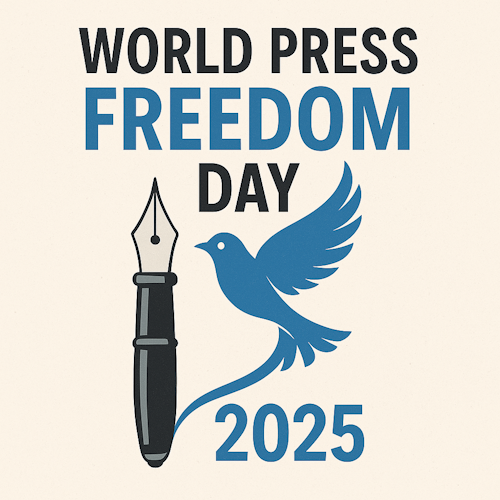By Nelly M. Nyangorora

Every 3rd May, the world observes World Press Freedom Day. It is a reminder to industry players and the public of the importance of a free,independent and pluralistic press. The theme this year ,reflected on the urgency to adapt to the fast evolving technological space stressing the need for agility and upskilling for those in the media space. The Guardian in its publication of 3rd May titled “There is a war on journalists raging around the world: Let their voices be heard, reveals escalating threats faced by journalists. It points to a rising wave across the globe undermining press freedom that includes disinformation, state surveillance,media disruption and shutdown, imprisonment and even targeted violence. The report highlights a report of the Committee to Protect Journalists CPJ 2024, citing last year as the worst with at least 124 journalists killed. The report details increasing dangers journalists face around the globe, including widespread online misinformation.
Some regimes are weaponizing digital tools to silence the press, while others are employing emerging technologies to protect journalists, enhance storytelling and expand the reach of factual reporting. It is a double edged sword!
I had the privilege to engage with the esteemed members of the international association of women in radio and television IAWRT in a webinar, on Leveraging AI as Women Journalists. This session couldn’t have come at an opportune time, when women journalists are not just adapting to change but actively shaping it. We had a stimulating session that also incorporated digital safety awareness, and explored how AI is being woven into the fabric of journalism.
With over 32 million internet users and a rapidly growing youth population that is tech savvy and media hungry, digital storytelling is evolving fast. The smartphone is the newsroom of choice as content remains King!
Women journalists must keep pace and take advantage of AI to organise field notes, record, edit, write, distribute and monetize their content to remain relevant.
IAWRTs research on the extent to which women journalists are using technology released early in the year,provided insights on how women journalists like those in purely online platforms like WIllow Health are already using technology integrating AI to automate tasks.
AI offers immense tools like transcription software for interviews,generative AI to summarize lengthy reports or brainstorm catchy headlines.
The presentation highlighted some international models like Schibsted, the Scandinavian media house that has automated more than 70 pc of its sports news using AI. This allows their journalists to focus on human driven narratives and investigative stories while AI handles the basics. Perhaps a great tool for women journalists struggling with work life balance owing to the demands of the digital news world.
However, innovation must come with integrity. Ethical questions about AI in journalism are increasingly pressing. Who owns the content? How do we prevent algorithmic bias? What safeguards are needed? The media council of Kenya’s AI draft AI guidelines and the Kenya Bureau of Standards are in efforts to set national benchmarks. These are vital as they offer a framework to enable journalists in Kenya to embrace AI with accountability and transparency.
Exciting opportunities on AI abound, there is the Kenya-UK Tech Hub AI challenge which seeks to support local innovations-including those designed by women to solve real world problems using AI. These are incubators of African led tech solutions with global relevance.
The interactive session stirred curiosity as women journalists expressed eagerness to fully embrace AI tools calling for structured training programs,mentorship initiatives and partnerships with Ai developers.
AI lightens the load of repetitive tasks allowing journalists to spend more time on investigative reporting, fact checking and community engagement. In a world drowning in information and misinformation,human judgement remains valuable. AI thus cannot replace humans, it only enhances the diversity in journalism.
The future of journalism is not just adopting new tools but on who uses these tools, why they use them, and how they shape the stories we tell.
Women journalists in Kenya are taking the challenge reporting in a brave new world in the face of AI, and unwaveringly pursuing truth, embodying the spirit of World Press Freedom Day.
As we reflect on the escalating threats to journalism, let us amplify the voices of women leading the charge , support their journeys and ensure the future of journalism is one where freedom and innovation walk hand in hand.
Nelly Moraa is an Independent Journalist and news entrepreneur managing integrityalliance.biz and a member of IAWRT. Her profile can be found on LinkedIn.
© 2025 IWART Kenya